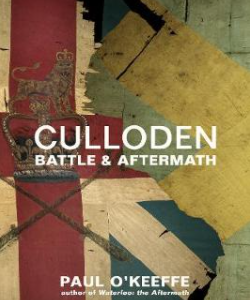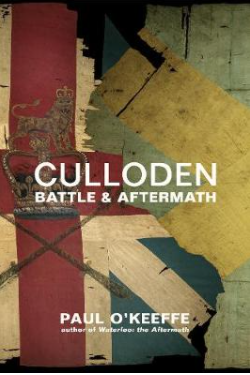
Battle and aftermath

Culloden, Falkirk, and Prestonpans, the three pitched battles of 1745, were brief affairs lasting about 90 minutes. Culloden ended all hope of a Stuart Restoration. What followed destroyed the traditional clan society of the Highlands. The last pitched battle in Scotland, between Scotland and England. There were more Scottish than English support for the Jacobites, and more established Hanoverians than for the Stuarts.
Culloden made George II’s son, the Duke of Cumberland, the hero of Lowland Scotland, Edinburgh, and Glasgow both celebrated news of his victory at Culloden with relief and enthusiasm. Cumberland was harsh, dismissing the advice offered by the Lord President, Duncan Forbes, that clemency was better than policy than severity as worthy only of an old woman. On his own terms, Cumberland was successful, neither Jacobites nor the Highlands troubled the British state again.
On the eve of the battle of Culloden in April 1746, the man who would lead the destruction of Bonnie Prince Charlie’s rebel army and the subsequent brutal repression of the Scottish clans celebrated his 25th birthday. In Glasgow, bells were rung and toast drunk to the Duke. William Augustus, Duke of Cumberland, the third son of King George II, is lodged in Scottish mythology as the “ Butcher Cumberland” or “ Stinking Willie”, and fed a sense of resentment over “ English” repression that enshrined in today’s push for Scottish Independence.
Peter O’Keeffe reveals the encounters of Cumberland and Charles Stuart, and unexpected consequences of the uprising mapping the Scottish Highlands to aid military subjugation would eventually lead to the foundation of the Ordnance Survey and traces of later careers of the battle’s protagonists the Duke of Cumberland’s transformation from idolised national hero to discredited butcher.
Culloden occurred barely 40 years after the 1707 Acts of Union that had joined Scotland and England politically. The ’45 was the last of a series of Jacobite rebellions that sought to unseat the Protestant Hanovers and restore the Catholic Stuart line to the British monarchy. The charismatic Prince Charles Edward Stuart, also just 25, was the grandson and heir of James II.
Charles had called the Catholic Highland clans in the summer of 1745 after landing from France. Joined by Lowland Episcopalians, who hated the Hanoverian-supporting Presbyterians, his army swiftly took Edinburgh and famously marched as far south as Derby, in the English Midlands, before stretched supply lines and dwindling numbers forced a tactical retreat. The uprising was to end in the last land battle fought on British mainland soil on a boggy, windswept moor between Inverness and Nairn.
The Highlander’s tactics were simple: they fire a mass valley of musket shot at enemy ranks, discarded their guns, and charged like wild cats, wielding broadswords, axes, and dirks. The Crown forces crumbled at first in the face of this terrifying horde. The Battle of Prestonpans, outside Edinburgh, was over in just 10 minutes. As Falkirk, the bulk of the fighting was done in half an hour. By then Cumberland had taken command, reinforcing discipline and organisation. O’Keeffe details the weakening state and tactical mistakes of the Jacobites as their numbers shrank, Charles and his generals planned a night attack on Cumberland’s camp at Nairn- but they failed to reach it in time and had to march their men back to Culloden, where they arrived exhausted, as some were still asleep when the battle began at 1 pm, within the hour, there was carnage. The Highlanders line was askew. They were cut down by withering grapeshot and musketry. Those who reached enemy lines found themselves confronting Cumberland’s secret weapon: bayonets. Cumberland also launched a merciless pursuit of the defeated rebels and followed up with ruthless pacification of the Highlands. Charles disbanded his forces and after a legendary escapade through Scotland’s western Highlands and Islands, fled back to France.
Culloden: Battle & Aftermath by Paul O’Keefe, Bodley Head £25, 432 pages.
